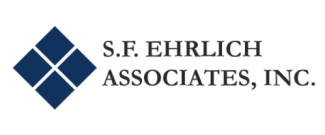
How much can I expect from Social Security?
Put away your calculators and W2 earnings statements. This is not a math lesson - thank goodness - because the math behind the calculation of your Social Security retirement benefit can be pretty complicated. That said, if you want to know the general calculations behind your Social Security retirement benefit, read on.
- Start with your highest 35 years of inflation-adjusted, capped, earned income,
- "Highest 35 years" - this applies to both a 90-year-old, who might have 60 years or more of employment income (e.g., W2 or 1099 earnings) as well as a 30-year old who only has a few years of earnings. Passive income doesn’t count, such as income generated by real estate or securities investments.
- "Inflation-adjusted" income - for each earnings year recorded by the Social Security Administration, an inflation adjustment is applied so all dollars earned in the past are adjusted for current years’ earnings.
- "Capped" income - In 2017, the Social Security wage base is $127,200. What does this mean? Any dollars earned over and above this amount are not taxed by Social Security in your paycheck and therefore are not considered earned income when determining your Social Security retirement benefit.
- Once you have your highest 35 years of earnings, we can calculate an average monthly earnings figure, referred to in Social Security vernacular as the AIME (averaged indexed monthly earnings). The AIME gets run through a complicated formula, which we can ignore for purposes of this discussion. But the step of running through the formula is important because it leads us to your...
- Primary Insurance Amount (PIA) - Your PIA is the amount of monthly retirement benefit you're entitled to collect at your Full Retirement Age (FRA). See below for a short note on FRA. The maximum PIA in 2017 is $2,888, which assumes maximum earnings in each earnings year.
- Full Retirement Age - If you were born in 1943-1954, your FRA is 66; if you were between 1954 and 1960, your FRA is somewhere between 66 and 67; and if you were born in 1960 or later, your FRA is 67.
Now that you know how to calculate your retirement benefit, I'm sure you're running off to run your numbers, right? If your answer is "no", all is not lost. You can go to the Social Security Administration's website, click on "My Social Security" and create an account to download your Social Security benefits statement. If you're wondering why you haven't received a paper Social Security benefits statement in awhile, it's because the Social Security Administration discontinued delivery a few years back (unfortunately with little fanfare). In January 2017, the Social Security Administration announced that they will send paper statements to people who are age 60 or older who have not created a "My Social Security" account and who are not yet receiving statements.
So give it a shot - log on to the website and see what your projected retirement benefit looks like (or run your own numbers if you're a true masochist). Don't think it's going to be there when you need to collect? Check out our article addressing that very point!

